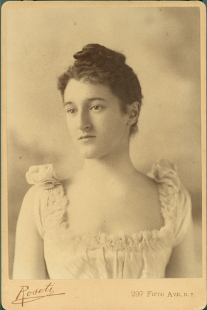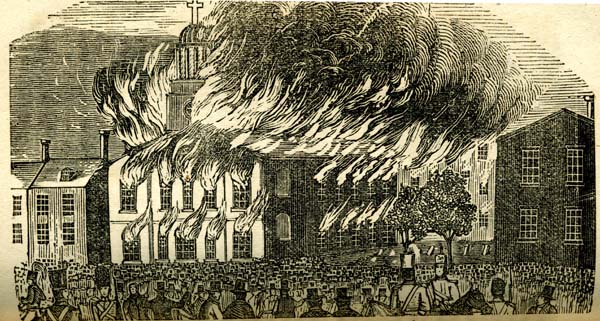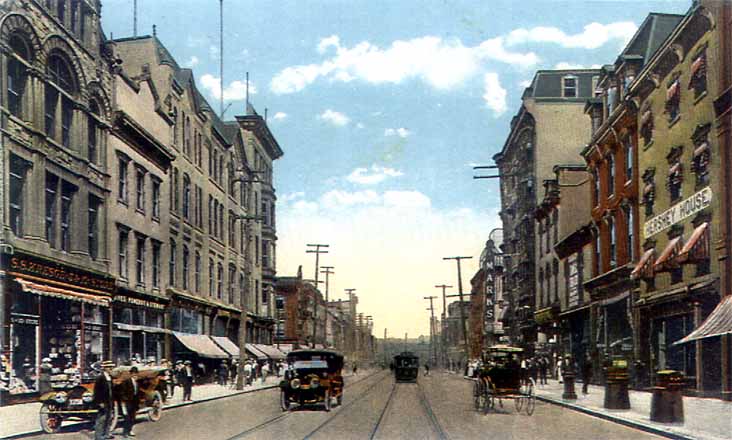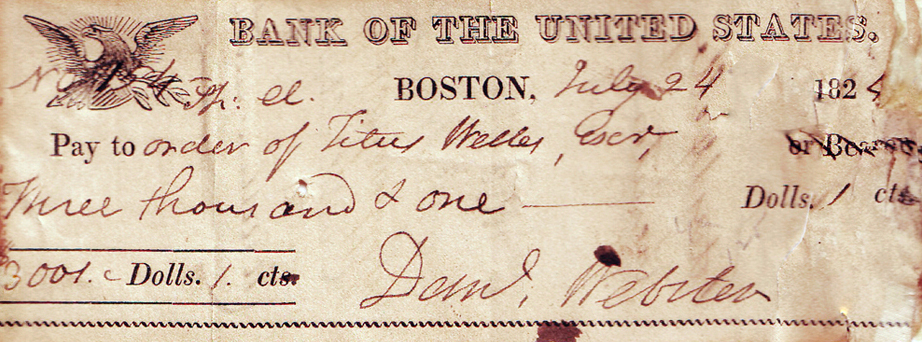|
John Cadwalader (jurist)
John Cadwalader (April 1, 1805 – January 26, 1879) was an American lawyer, jurist, and politician who served as a United States representative from Pennsylvania and a United States district judge of the United States District Court for the Eastern District of Pennsylvania. Education and career Born on April 1, 1805, in Philadelphia, Pennsylvania, Cadwalader received a Bachelor of Arts degree in 1821 from the University of Pennsylvania and read law in 1825. He entered private practice in Philadelphia from 1825 to 1855. He was Solicitor for the Second Bank of the United States in Philadelphia in 1830. He was Vice Provost of the Law Academy of Philadelphia from 1833 to 1853. He was a Captain in the Pennsylvania State Militia in Harrisburg, Pennsylvania in 1844, which was called out for the Philadelphia Nativist Riots. He was elected as a member of the American Philosophical Society in 1867. Congressional service Cadwalader was elected as a Democrat from Pennsylvania's 5th co ... [...More Info...] [...Related Items...] OR: [Wikipedia] [Google] [Baidu] |
United States District Court For The Eastern District Of Pennsylvania
The United States District Court for the Eastern District of Pennsylvania (in case citations, E.D. Pa.) is one of the original 13 federal judiciary districts created by the Judiciary Act of 1789. It originally sat in Independence Hall in Philadelphia as the United States District Court for the District of Pennsylvania, and is now located at the James Byrne Courthouse at 601 Market Street in Philadelphia. There are Eastern District federal courtrooms in Philadelphia, Lancaster, Allentown, Reading, and Easton. The Court's jurisdiction includes Philadelphia, as well as Berks, Bucks, Chester, Delaware, Lancaster, Lehigh, Montgomery and Northampton counties. The district is a part of the Third Circuit, and appeals are taken to that Circuit (except for patent claims and claims against the U.S. government under the Tucker Act, which are appealed to the Federal Circuit). The chief judge for the Eastern Pennsylvania District Court is Juan Ramon Sánchez. The people in the di ... [...More Info...] [...Related Items...] OR: [Wikipedia] [Google] [Baidu] |
Mary Cadwalader Rawle Jones
Mary Cadwalader Rawle Jones (December 12, 1850 – September 22, 1935) was an American author, socialite, and social leader during the Gilded Age. Early life Mary, who was known as Minnie, was born on December 12, 1850 at Powel House, her family home in Philadelphia, Pennsylvania. She was the daughter of William Henry Rawle (1823–1889) and Mary Binney (née Cadwalader) Rawle (1829–1861), both from prominent old Philadelphia families, the Rawles and the Cadwaladers. She had one younger brother, who died young of diphtheria in 1860, around the same time her mother died. Her father, with whom she had a warm relationship, was a prominent attorney in Philadelphia with Rawle & Henderson, a firm founded by her great-grandfather in 1783. When she was eighteen years old, her father remarried to Emily Cadwalader, the daughter of Thomas McCall Cadwalader, her mother's cousin and Mary's own cousin twice removed. Her paternal grandparents were William Rawle Jr. and Mary Anna (née Til ... [...More Info...] [...Related Items...] OR: [Wikipedia] [Google] [Baidu] |
James Buchanan
James Buchanan Jr. ( ; April 23, 1791June 1, 1868) was an American lawyer, diplomat and politician who served as the 15th president of the United States from 1857 to 1861. He previously served as secretary of state from 1845 to 1849 and represented Pennsylvania in both houses of the U.S. Congress. He was an advocate for states' rights, particularly regarding slavery, and minimized the role of the federal government preceding the Civil War. Buchanan was the last president born in the 18th century. Buchanan was a prominent lawyer in Pennsylvania and won his first election to the state's House of Representatives as a Federalist. He was elected to the U.S. House of Representatives in 1820 and retained that post for five terms, aligning with Andrew Jackson's Democratic Party. Buchanan served as Jackson's minister to Russia in 1832. He won the election in 1834 as a U.S. senator from Pennsylvania and continued in that position for 11 years. He was appointed to serve as Pres ... [...More Info...] [...Related Items...] OR: [Wikipedia] [Google] [Baidu] |
34th United States Congress
The 34th United States Congress was a meeting of the legislative branch of the United States federal government, consisting of the United States Senate and the United States House of Representatives. It met in Washington, D.C., from March 4, 1855, to March 4, 1857, during the last two years of Franklin Pierce's presidency. The apportionment of seats in the House of Representatives was based on the Seventh Census of the United States in 1850. The Whig Party, one of the two major parties of the era, had largely collapsed, although many former Whigs ran as Republicans or as members of the " Opposition Party." The Senate had a Democratic majority, and the House was controlled by a coalition of Representatives led by Nathaniel P. Banks, a member of the American Party. Major events * March 30, 1855: Elections were held for the first Kansas Territory legislature. Missourians crossed the border in large numbers to elect a pro-slavery body. * July 2, 1855: The Kansas territorial ... [...More Info...] [...Related Items...] OR: [Wikipedia] [Google] [Baidu] |
United States House Of Representatives
The United States House of Representatives, often referred to as the House of Representatives, the U.S. House, or simply the House, is the lower chamber of the United States Congress, with the Senate being the upper chamber. Together they comprise the national bicameral legislature of the United States. The House's composition was established by Article One of the United States Constitution. The House is composed of representatives who, pursuant to the Uniform Congressional District Act, sit in single member congressional districts allocated to each state on a basis of population as measured by the United States Census, with each district having one representative, provided that each state is entitled to at least one. Since its inception in 1789, all representatives have been directly elected, although universal suffrage did not come to effect until after the passage of the 19th Amendment and the Civil Rights Movement. Since 1913, the number of voting representat ... [...More Info...] [...Related Items...] OR: [Wikipedia] [Google] [Baidu] |
American Philosophical Society
The American Philosophical Society (APS), founded in 1743 in Philadelphia, is a scholarly organization that promotes knowledge in the sciences and humanities through research, professional meetings, publications, library resources, and community outreach. Considered the first learned society in the United States, it has about 1,000 elected members, and by April 2020 had had only 5,710 members since its creation. Through research grants, published journals, the American Philosophical Society Museum, an extensive library, and regular meetings, the society supports a variety of disciplines in the humanities and the sciences. Philosophical Hall, now a museum, is just east of Independence Hall in Independence National Historical Park; it was designated a National Historic Landmark in 1965. History The Philosophical Society, as it was originally called, was founded in 1743 by Benjamin Franklin, James Alexander, Francis Hopkinson, John Bartram, Philip Syng, Jr. and others a ... [...More Info...] [...Related Items...] OR: [Wikipedia] [Google] [Baidu] |
Philadelphia Nativist Riots
The Philadelphia nativist riots (also known as the Philadelphia Prayer Riots, the Bible Riots and the Native American Riots) were a series of riots that took place on May 68 and July 67, 1844, in Philadelphia, Pennsylvania, United States and the adjacent districts of Kensington and Southwark. The riots were a result of rising anti-Catholic sentiment at the growing population of Irish Catholic immigrants. The government brought in over a thousand militia—they confronted the nativist mobs and killed and wounded hundreds. In the five months leading to the riots, nativist groups had been spreading a false rumor that Catholics were trying to remove the Bible from public schools. A nativist rally in Kensington erupted in violence on May 6 and started a deadly riot that would result in the destruction of two Catholic churches and numerous other buildings. Riots erupted again in July after it was discovered that St. Philip Neri's Catholic Church in Southwark had armed itself for prote ... [...More Info...] [...Related Items...] OR: [Wikipedia] [Google] [Baidu] |
Harrisburg, Pennsylvania
Harrisburg is the capital city of the Commonwealth of Pennsylvania, United States, and the county seat of Dauphin County. With a population of 50,135 as of the 2021 census, Harrisburg is the 9th largest city and 15th largest municipality in Pennsylvania. Harrisburg is situated on the east bank of the Susquehanna River. It is the larger principal city of the Harrisburg–Carlisle metropolitan statistical area, also known as the Susquehanna Valley, which had a population of 591,712 as of 2020, making it the fourth most populous metropolitan area in Pennsylvania after the Philadelphia, Pittsburgh, and Lehigh Valley metropolitan areas. Harrisburg played a role in American history during the Westward Migration, the American Civil War, and the Industrial Revolution. During part of the 19th century, the building of the Pennsylvania Canal and later the Pennsylvania Railroad allowed Harrisburg to develop into one of the most industrialized cities in the Northeastern United Stat ... [...More Info...] [...Related Items...] OR: [Wikipedia] [Google] [Baidu] |
Second Bank Of The United States
The Second Bank of the United States was the second federally authorized Hamiltonian national bank in the United States. Located in Philadelphia, Pennsylvania, the bank was chartered from February 1816 to January 1836.. The Bank's formal name, according to section 9 of its charter as passed by Congress, was "The President Directors and Company of the Bank of the United States". While other banks in the US were chartered by and only allowed to have branches in a single state, it was authorized to have branches in multiple states and lend money to the US government. A private corporation with public duties, the Bank handled all fiscal transactions for the U.S. Government, and was accountable to Congress and the U.S. Treasury. Twenty percent of its capital was owned by the federal government, the Bank's single largest stockholder.. Four thousand private investors held 80 percent of the Bank's capital, including three thousand Europeans. The bulk of the stocks were held by a few ... [...More Info...] [...Related Items...] OR: [Wikipedia] [Google] [Baidu] |
United States Federal Judge
In the United States, federal judges are judges who serve on courts established under Article Three of the U.S. Constitution. They include the chief justice and the associate justices of the U.S. Supreme Court, the circuit judges of the U.S. Courts of Appeals, the district judges of the U.S. District Courts, and the judges of the U.S. Court of International Trade. These judges are often called "Article Three judges". Unlike the president and vice president of the United States and U.S. senators and representatives, U.S. federal judges are not elected officials. They are nominated by the President and confirmed by the Senate, pursuant to the Appointments Clause of Article Two of the U.S. Constitution. The U.S. Constitution gives federal judges life tenure, and they hold their seats until they die, resign, or are removed from office by impeachment. Strictly speaking, the term "federal judge" does not include U.S. magistrate judges or the judges of lesser federal trib ... [...More Info...] [...Related Items...] OR: [Wikipedia] [Google] [Baidu] |
United States Representative
The United States House of Representatives, often referred to as the House of Representatives, the U.S. House, or simply the House, is the lower chamber of the United States Congress, with the Senate being the upper chamber. Together they comprise the national bicameral legislature of the United States. The House's composition was established by Article One of the United States Constitution. The House is composed of representatives who, pursuant to the Uniform Congressional District Act, sit in single member congressional districts allocated to each state on a basis of population as measured by the United States Census, with each district having one representative, provided that each state is entitled to at least one. Since its inception in 1789, all representatives have been directly elected, although universal suffrage did not come to effect until after the passage of the 19th Amendment and the Civil Rights Movement. Since 1913, the number of voting representativ ... [...More Info...] [...Related Items...] OR: [Wikipedia] [Google] [Baidu] |
Read Law
Reading law was the method used in common law countries, particularly the United States, for people to prepare for and enter the legal profession before the advent of law schools. It consisted of an extended internship or apprenticeship under the tutelage or mentoring of an experienced lawyer. The practice largely died out in the early 20th century. A few U.S. states still permit people to become lawyers by reading law instead of attending law school, although the practice is rare. In this sense, "reading law" specifically refers to a means of entering the profession, although in England it is still customary to say that a university undergraduate is "reading" a course, which may be law or any other. __TOC__ History United States In colonial America, as in Britain in that day, law schools did not exist at all until Litchfield Law School was founded in 1773. Within a few years following the American Revolution, some universities such as the College of William and Mary and t ... [...More Info...] [...Related Items...] OR: [Wikipedia] [Google] [Baidu] |








